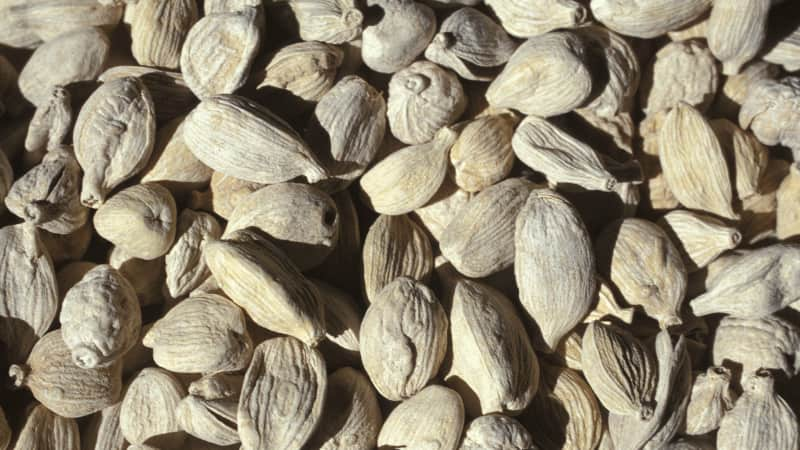Known as the Queen of Spices, green cardamom (Elettaria cardamomum) originated in southern India’s rain forests in a region now known as the Cardamom Hills. The perennial bush, a member of the ginger family, produces shoots at the plant’s base that are picked when they’re just ripening and then dried. The small, oval, three-sided green pods and the resinous black seeds within produce an alluring scent of camphor, mint, and lemon that has made cardamom a sought-after spice for at least 4,000 years.
Cardamom: How Did It Become Scandinavia’s Favorite Spice?
Published Mar. 30, 2021.

Today cardamom is cultivated in Sri Lanka and Guatemala in addition to India and is the third most costly spice globally, after saffron and vanilla. Outside of India, it’s primarily used in Arab, Iranian, and North African cuisines, tracing spice trade routes that connected these areas in ancient times. Throughout the Middle East, cardamom scents rice pudding; baklava; and, perhaps most important, qahwah, or cardamom-spiced coffee. It’s the predominant spice in harees, a meat and grain dish served at the break of the Ramadan fast, and it’s an element of the iconic spice blends of the region, such as Morocco’s ras el hanout, Syria’s baharat, and Malaysia’s masala.
It has also become a defining spice in Scandinavia, a region far removed from the early spice routes. According to data from the United Nations, “Sweden consumes 18 times more cardamom per capita than the median country, while Norway consumes almost 30 times more.”
There are two theories about how cardamom took such a detour. Swedish cookbook author Johanna Kindvall says that many Swedes believe the Vikings brought cardamom to Scandinavia, having encountered the spice in the bazaars of Constantinople (today’s Istanbul) about 1,000 years ago. But Daniel Serra, a culinary archaeologist who studies Viking and medieval food, is skeptical. “We don’t have much evidence of import spices being used during the Viking Age,” Serra said. “Neither archaeological evidence nor references in Viking or Icelandic literature support that cardamom graced Scandinavian kitchens during that era.”
Serra thinks that the Moors introduced cardamom to Scandinavia after establishing a presence on the Iberian Peninsula in the eighth century. Danish monk Knud Juul first mentions cardamom in the 13th-century cookbook Libellus de Arte Coquinaria—the first time it shows up in Scandinavian chronicles—and Serra notes that the cookbook, “which is one of the earliest remaining from the medieval period, includes recipes almost identical to Moorish ones.”
Kindvall describes the fragrant cardamom as a “memory smell” for the way it invokes thoughts of Scandinavia. Whether perfuming a glass of glögg, a platter of Swedish meatballs, or a sweet kardemummabulle (cardamom bun), for her, the scent of cardamom is the smell of home.

